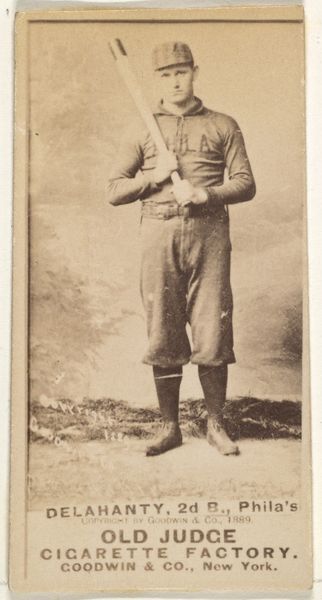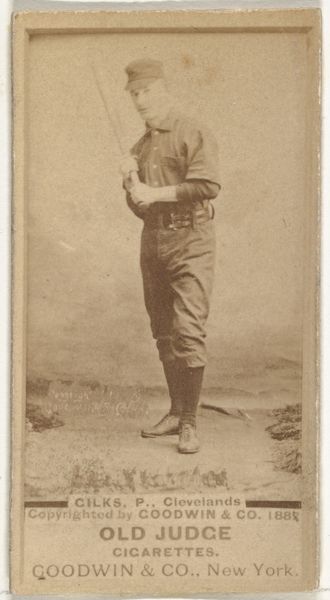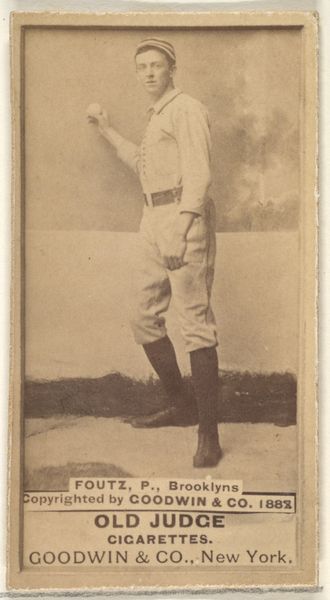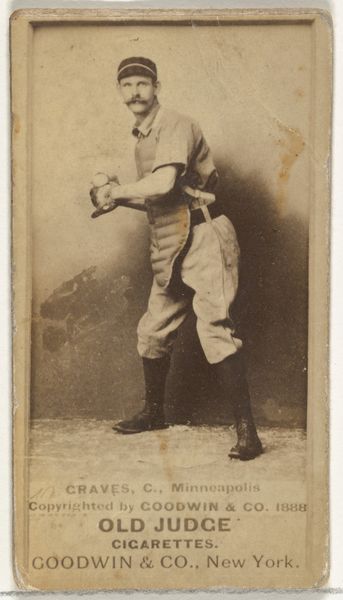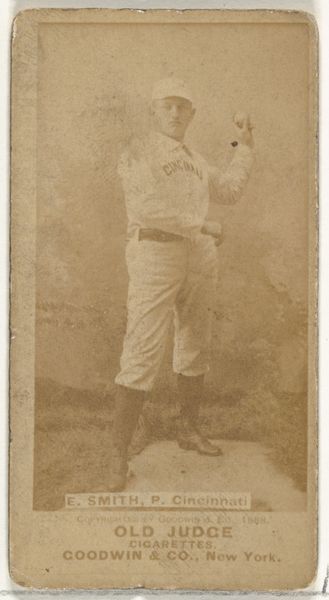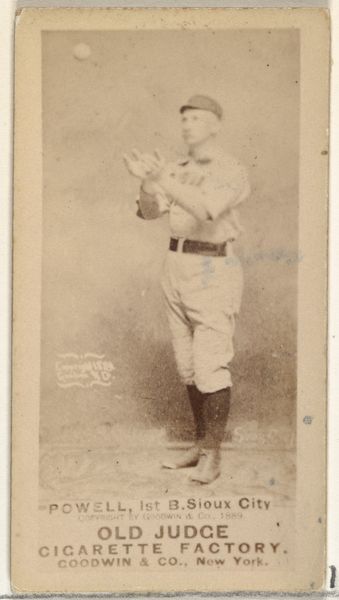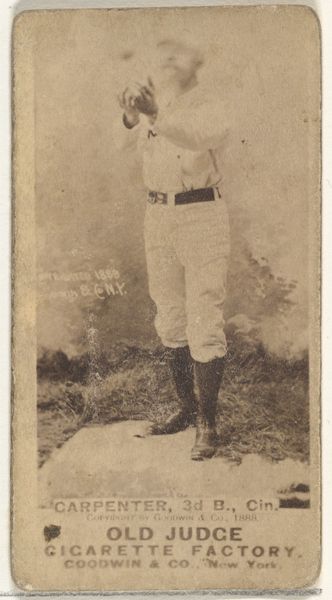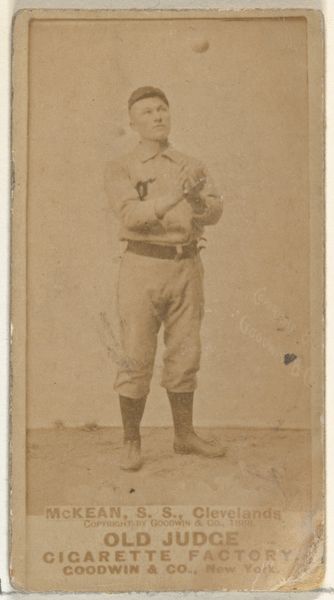
Rehse, Pitcher, Minneapolis, from the Old Judge series (N172) for Old Judge Cigarettes 1888
0:00
0:00
print, photography
#
portrait
#
pictorialism
# print
#
baseball
#
photography
#
men
Dimensions: sheet: 2 11/16 x 1 3/8 in. (6.9 x 3.5 cm)
Copyright: Public Domain
Editor: This is an 1888 photographic print titled "Rehse, Pitcher, Minneapolis, from the Old Judge series (N172) for Old Judge Cigarettes," created by Goodwin & Company. What strikes me is how this almost mundane photograph of a baseball player, in sepia tones, was actually made to advertise cigarettes! What is your perspective on this? Curator: I focus on how this piece exemplifies the entanglement of labor, material culture, and early consumerism. It’s fascinating to consider how the rise of baseball coincided with the mass production and aggressive marketing of cigarettes. The card itself is not simply a portrait; it's a commodity circulated to drive the consumption of another commodity. How does understanding this connection change your view of the work? Editor: It does shift my perspective! Seeing it as part of a system, rather than just a picture. It's mass produced and intentionally distributed; it transforms it into something completely different. Does the fact that it's considered art now alter that relationship at all? Curator: Absolutely. The recontextualization of this card within a museum setting elevates its status. Yet, it's crucial not to forget its original function within the capitalist machine. The materiality of the card – its cheap production, its widespread distribution, and ultimate disposability – all speak to the era’s culture of mass consumption. Editor: So, even as art, it still carries the weight of its initial purpose and the social forces that shaped it. I'll never look at trading cards the same way! Curator: Precisely! Examining art through a materialist lens reminds us to question not just what we see, but also how it was made, who it served, and the economic systems it perpetuated.
Comments
No comments
Be the first to comment and join the conversation on the ultimate creative platform.



